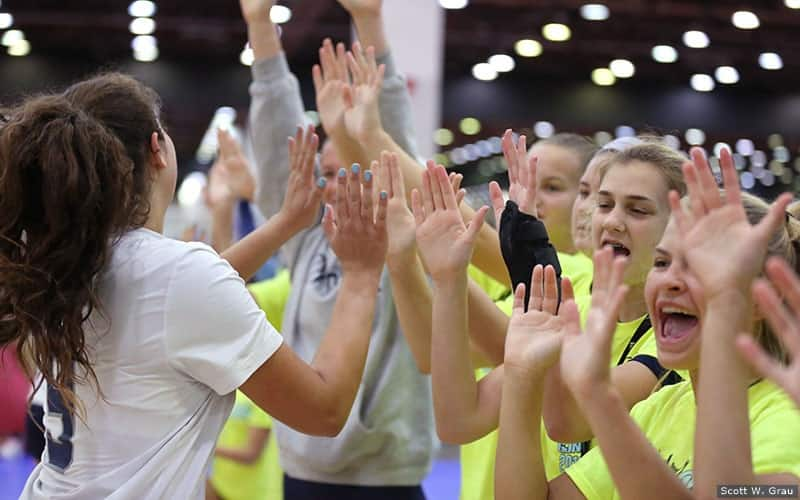
The ability to work together as a team is crucial for success in life, and youth sports are one of the best ways for kids to learn the value of teamwork. Most kids readily pick up the concept and generally get better at working as a team as their skills develop.
Sometimes, however, you may encounter a team that doesn’t function well together. Maybe your team has athletes with various skills levels. Or, maybe your seasoned athletes aren’t welcoming the new kids. Whatever the case may be, here are four ways you can help your athletes play as a team.
1. Create goals as a team
Teams work best when everyone has the same goal. In youth sports, players sometimes have varying interests in competition. Some really want to win, some are there to kick the ball around with friends, and others may be on the team because playing a sport was a school or parental requirement.If winning is not an effective purpose to unite the team, focus on process goals like skill acquisition or the number team plays completed during a game. Working together and supporting each other becomes the immediate win, which could very well lead to victory in the long-run, too.
2. Encourage a culture of inclusivity
It is difficult to function as a cohesive team when some team members feel like they don’t belong. Sometimes this results from differences in skill level or emotional maturity or physical maturity. In other cases, teams can be divided by social cliques.For drills, scrimmages, travel, and other group activities, try to make sure the same kids aren’t always sticking together and excluding others. Switch up the pairings frequently so kids build relationships with everyone on the team. Coaches can also call attention to the “left out” player’s skills, ideas, or successes to provide recognition and demonstrate that the player is a contributing member of the team.
3. Check all egos at the door
Having a player who is more talented or more physically mature than the rest of the team can hinder teamwork, depending on the athlete. If the star player dominates the game to feed his or her ego, teammates quickly lose interest in playing second fiddle.Coaches and parents should work with star players to help them understand they can achieve greater success by working with teammates than they can on their own. Use the experiences of elite athletes they admire for reference. Michael Jordan won six NBA Championships with his team, not on his own, and there are similar examples across all team sports.
4. Motivate with positivity
When improving performance, learning something new, or being a better teammate doesn’t get acknowledged or praised, young athletes may conclude they are still not good enough or that there’s no reason to put in the extra work.
If parents and coaches want to encourage teamwork they need to consistently acknowledge examples of good teamwork, and even good attempts at teamwork so kids are motivated to keep improving.
By incorporating these practices into your coaching, you can create a more teamwork-focused environment for your players.
About TrueSport
TrueSport® is a grassroots movement born and powered by the experience and values of USADA–the U.S. Anti-Doping Agency. The TrueSport® mission is simple and bold: to change the culture of youth sport by providing powerful educational tools to equip young athletes with the resources to build the life skills and core values for lasting success on and off the field. Interested in learning more? Head over to TrueSport.org for more information and free educational resources on how you can join the TrueSport movement.
